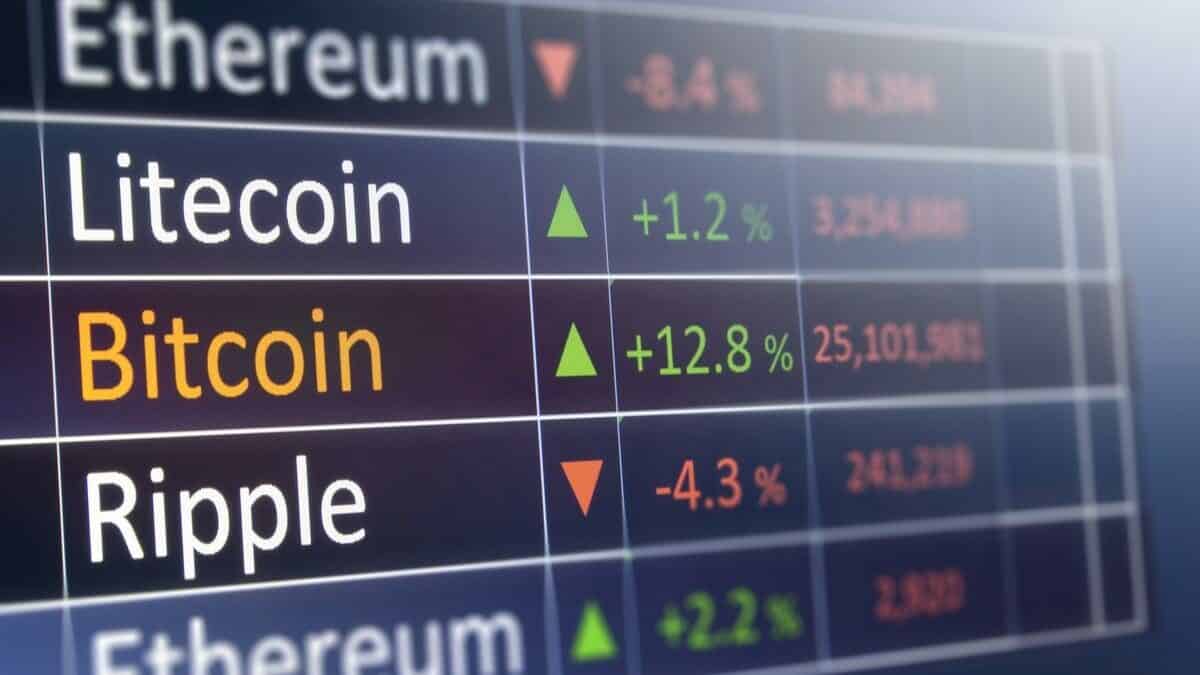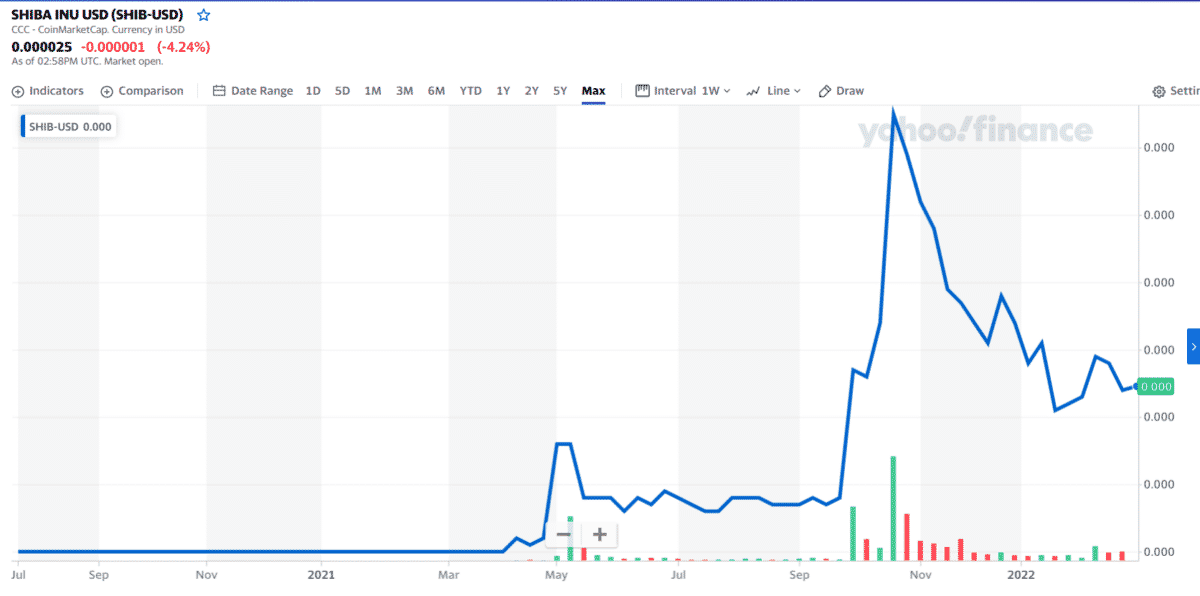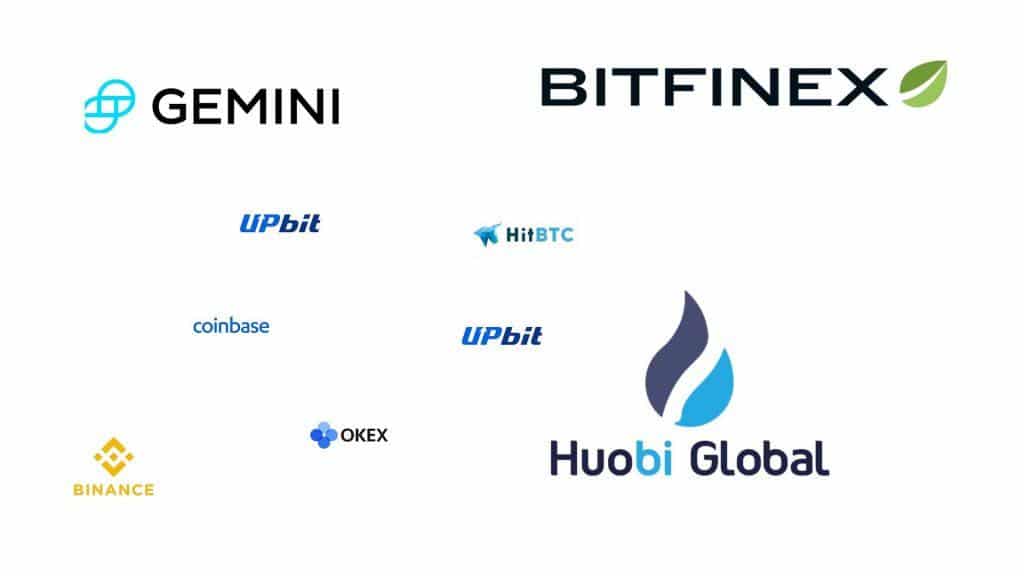- Why is the crypto market very volatile?
- What moves crypto prices up and down?
- Is it worth investing in crypto?
Crypto is an extremely volatile market. For instance, it is common for Bitcoin to grow or shrink in value by five percent or even ten percent in just one day. On rare occasions, Bitcoin can even move about 30 percent in one day. Secondary cryptocurrencies, particularly the less familiar assets, can be enormously more volatile than Bitcoin at times. Such is the case with the Floki Inu coin, which moved about 33 percent on 2 March 2022.
Despite this extreme volatility, investors still consider crypto, particularly Bitcoin, as a store of value that can protect other investments against market uncertainties. You might then ask why cryptocurrencies have value, given their volatile nature. In this post, you will find the answer to this question and understand what factors influence crypto price movements.
What is cryptocurrency?
It is a type of currency that exists purely virtually or digitally and makes use of cryptography to verify and record transactions. This currency is not issued or regulated by a central authority. Instead, it takes a decentralized approach to record transactions and issues new units.

What factors influence crypto prices?
Several fundamental factors can affect the price of cryptocurrencies. Often, a crypto’s fundamental design at the outset has a significant bearing on its valuation and its long-term success. At other times, the influence comes from external sources, such as regulatory bodies and crypto exchanges.
This section covers five of the main factors driving crypto prices.
№ 1. Supply and demand
They are at the center of how things are valued. In general, the supply of crypto assets is known in advance or clearly defined in the project’s whitepaper. The best example is Bitcoin. From the beginning, its maximum supply is fixed at 21 million coins. When this number is reached, the blockchain will not produce new coins. Meanwhile, some cryptos have no supply ceiling, such as Ether.
Still, cryptocurrencies have burning mechanisms to prevent too much supply and slow down inflation. One crypto with such a mechanism is Shiba Inu. With its abundant supply of about 590 trillion, investors holding large amounts start burning coins in the early months of 2022. The goal is to significantly reduce the supply, thereby increasing the possibility of price approaching the $0.01 or $0.1 mark.

№ 2. Cost of production
New crypto-coins are generated through mining. In the language of crypto, mining refers to the process of verifying transactions using a computer to add a block to the blockchain. These computers are connected via the internet but are scattered worldwide. In return, blockchains give rewards in terms of tokens, which account for gas fees paid by transacting parties.
As the cost of mining goes up, the value of crypto appreciates similarly. Besides, miners will stop mining if the price of crypto being mined is low. They will stand to lose in this scenario, considering the high cost involved in starting and running a mining operation. Equipment used is pricey, and electricity bills can dramatically increase. As you can see, miners play a crucial role in keeping blockchains secure and verifying transactions. So long as users use a blockchain service, its associated crypto is expected to rise.
№ 3. Crypto exchange listing
Major crypto coins like Ether and Bitcoin are available for trading in several crypto exchanges. It is customary for crypto exchanges to include popular coins in their listing. In the case of less familiar coins, though, they may be listed on a few exchanges, severely hampering their exposure and curtailing their growth. Meanwhile, certain crypto wallet services enable users to convert and move tokens around several exchanges. However, this functionality is not available for free, inflating investing costs.
As the crypto coins get listed in more exchanges, more investors will be able to buy them, fueling demand. As you might have known, an increasing demand begets a price hike. If very few traders and investors buy and sell specific crypto assets in an unfamiliar exchange, the large spreads of these assets may prohibit prospective investors from taking part. Below are some of the biggest crypto exchanges in the world today.

№ 4. Competition
Anyone capable of starting a crypto movement can easily do so due to low barriers to entry into the crypto market. There are currently 9,560 different types of crypto assets in existence, as provided by Coinmarketcap.com, and new crypto projects are being launched every day. However, a crypto project will only go as far as its following and users.
A token with real-world utilities has vast chances of building a significant user base, mainly if it solves an obvious flaw of an existing platform or protocol. If the new token on the block receives attention, it can gain value from the competition. The result is that the existing platform loses a portion of its market share while the newcomer gets the lost market share. You can see the former price going down while the latter is going up.
№ 5. Regulation
It can be helpful in many ways, although it will defeat the very purpose of creating crypto. With regulatory oversight, it might be possible to introduce crypto products that allow short selling the crypto market or betting crypto using options or futures contracts.
The long-term effect of regulation could be an improved quotation and reduction of price volatility. However, regulations can pose a threat to the whole crypto market itself. If a regulatory body decides to shutdown a crypto exchange or the crypto market, it could lead to a market crash and dissolution.
Final thoughts
Understanding supply and demand and other factors influencing the price movement of cryptocurrencies will put you in an excellent position to make wise crypto investing decisions. For example, if your analysis shows that the demand for crypto will grow for a set of reasons and you do not expect supply to level up, that crypto is a feasible investment option. Be aware that government agencies still have an antagonistic view toward crypto, so this issue is the most significant single fundamental factor to consider when investing in any coin.